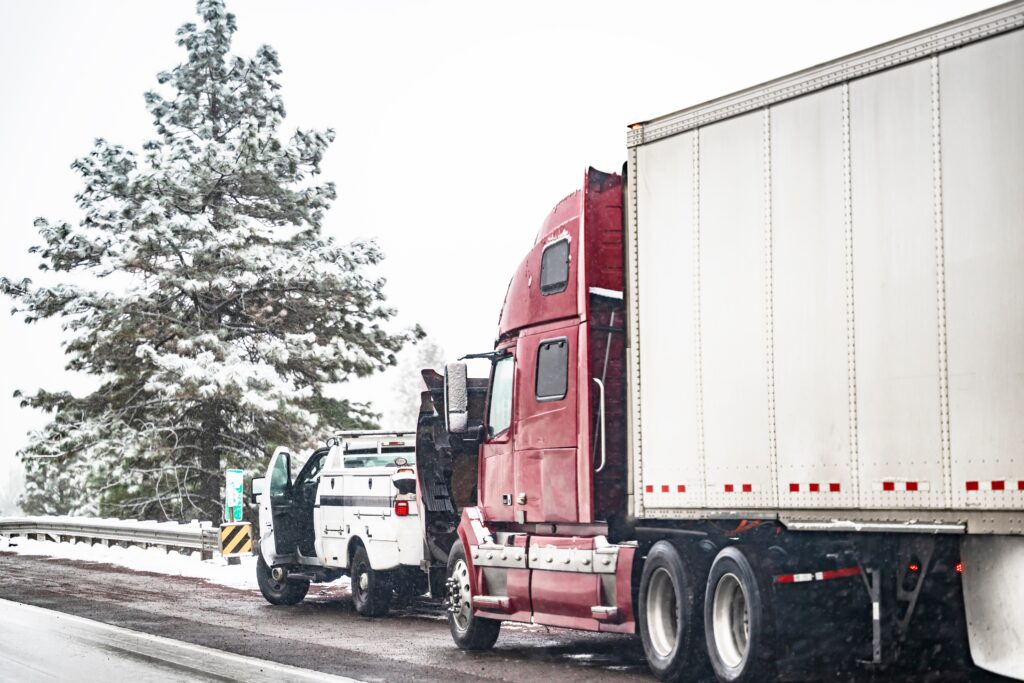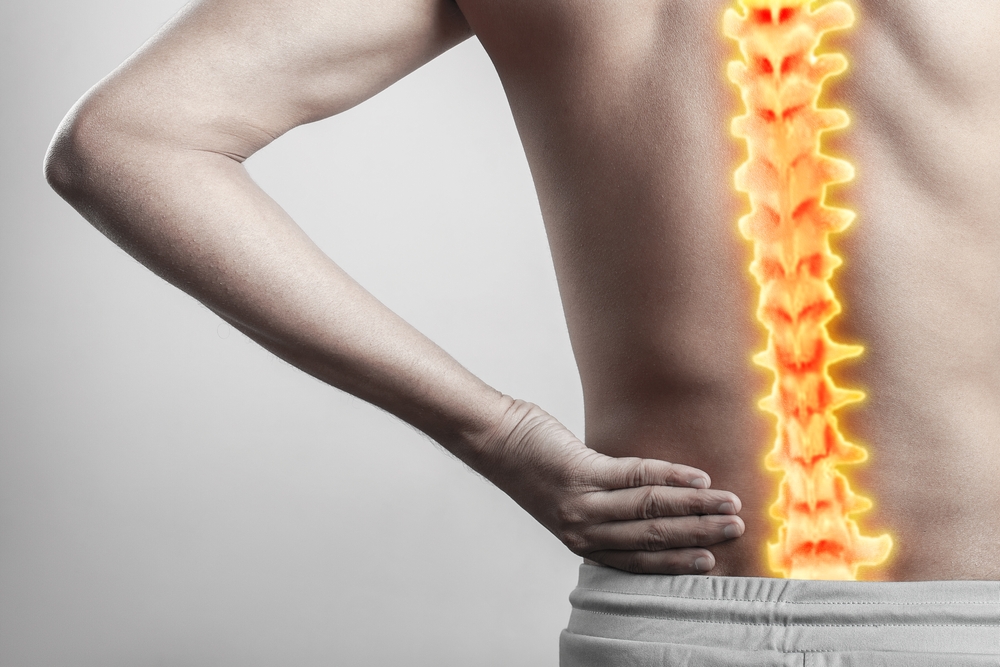Trucking accidents, given the sheer size and weight of the vehicles involved, can result in devastating consequences. When a passenger car collides with a truck, the disparity in size often means that the occupants of the smaller vehicle bear the brunt of the impact. As a result, the types of injuries can range from minor to catastrophic.
No matter what type of injuries you suffer in a crash, always discuss your legal rights and options with a skilled Sebastian truck accident lawyer.
Schedule A Consultation Today!
Soft Tissue Injuries

Soft tissue injuries, while sounding less alarming than fractures or internal damage, carry their own set of complications and discomforts. As the name suggests, these injuries affect the softer parts of our anatomy, namely muscles, tendons, and ligaments.
The force of a collision, especially one involving massive vehicles like trucks, can stretch, strain, or tear these tissues.
The result? Pain, swelling, and sometimes a reduced range of motion in the affected area.
Whiplash is one of the most cited soft tissue injuries stemming from vehicular accidents. The rapid forward and backward motion, similar to the action of a whip, affects the muscles and ligaments in the neck.
Though often associated with rear-end collisions, whiplash can occur from any sudden jolt. Victims might initially notice stiffness or a mild ache, but left untreated, these symptoms can escalate. Over time, chronic pain can set in, and in some cases, people experience headaches, dizziness, or even blurred vision.
It's also worth noting that soft tissue injuries don't always present symptoms immediately after the accident. Due to the adrenaline and shock, some people might feel perfectly fine, only to wake up the next day with pain or discomfort. This delayed onset can sometimes lead people to underestimate the injury's seriousness, thinking it's just a minor ache that will go away on its own.
Treatment for soft tissue injuries varies based on their severity. More serious injuries might require physical therapy or even surgical intervention.
Soft tissue injuries can be especially serious in trucking accidents, where the vehicle's size and weight dramatically increases the forces at play. Anyone involved in such an accident must be acutely aware of their physical state in the days following the incident.
Even if the initial shock masks the pain, any emerging discomfort should be a signal to seek medical attention. Proper documentation and treatment not only ensure a smoother recovery but also stand as evidence should there be any legal proceedings in the future.
Lacerations and Abrasions
Lacerations and abrasions are two terms that frequently arise in the aftermath of trucking accidents.
Lacerations are essentially deep cuts or tears in the skin. Given the chaotic environment of a trucking accident, with shattered glass, twisted metal, and sharp objects thrown into the mix, the risk of suffering such an injury is heightened.
The depth of the laceration determines its severity. A superficial laceration might only affect the skin's outer layers, while a deep one can potentially damage underlying tissues, muscles, and tendons or even reach vital organs.
The primary concern with lacerations, especially deep ones, is the potential for significant blood loss. Profuse bleeding not only poses immediate health risks but can also lead to complications like infections if contaminants enter the bloodstream.
Consequently, immediate medical attention is necessary. Depending on the laceration's depth and location, treatment might involve stitches to close the wound or, in more severe cases, surgical intervention to repair any damaged underlying structures.
On the other hand, abrasions are more similar to scrapes. Imagine the skin rubbing against a rough surface; the outer layers might get scraped off, resulting in an abrasion. In the context of a trucking accident, such injuries can happen when a person lands on the road or any abrasive surface.
While abrasions might not seem as severe as lacerations, they come with their own set of challenges. The exposed raw skin is susceptible to infections, especially when debris like dirt or gravel becomes embedded in the wound.
Additionally, even after an abrasion heals, there's the concern of scarring. Without proper care, what starts as a simple scrape can leave a lasting mark on the skin, serving as a constant reminder of the traumatic event.
Treatment for abrasions typically involves cleaning the wound thoroughly to remove any foreign particles, followed by applying antibiotic ointments and dressing to keep it clean.
Broken and Fractured Bones
Broken and fractured bones are, unfortunately, a frequent outcome of trucking accidents, given the sheer magnitude of the forces involved.

The size and weight of trucks, when combined with their momentum, can unleash devastating impacts on smaller vehicles and their occupants. Such powerful collisions often lead to injuries that are more severe than those from typical car-to-car accidents, with broken and fractured bones being high on the list.
The term "fracture" in medical terminology essentially means a break in the bone. While people often distinguish between "broken" and "fractured" bones, medically speaking, they mean the same thing.
However, not all fractures are alike. They can range from minor hairline fractures, where the bone is only slightly cracked, to compound fractures, where the bone breaks in such a way that it pierces the skin.
In the chaotic scene of a trucking accident, several parts of the body can be subjected to intense forces, leading to fractures. The arms and legs, being extremities, are particularly vulnerable.
A person might instinctively stretch out an arm to brace for the impact or have their legs caught in a particular position, leading to fractures in these areas.
Ribs are also commonly affected. Even if there isn't a direct impact to the chest, the sudden jolt or compression during the collision can cause the ribs to break. Broken ribs are especially concerning as they can potentially puncture vital organs like the lungs.
The collarbone (or clavicle) is another bone susceptible due to its position and relative fragility. A direct blow to the shoulder can easily fracture this bone.
Similarly, the pelvis, being a central structure that bears the body's weight, can also suffer fractures in high-impact crashes. A fractured pelvis is particularly debilitating, often requiring extended recovery periods.
The treatment for broken or fractured bones largely depends on the severity and location of the fracture. Simple fractures, where the bone is broken but remains aligned, might be treated with immobilization using casts or splints, allowing the bone to heal naturally.
However, more complicated fractures, especially those where the bone fragments have shifted out of place, might require surgical intervention. Here, the bone fragments might be realigned and held together using pins, screws, or plates.
Traumatic Brain Injuries (TBIs)
Traumatic brain injuries (TBIs) stand out as particularly dangerous, primarily due to the nature of the brain in controlling virtually all aspects of our lives, from basic bodily functions to complex cognitive tasks. The brain, while well-protected by the skull, is vulnerable to the intense forces and traumas that we frequently see in trucking accidents.
TBIs occur when there's a disruption in the normal functioning of the brain. This disruption can be the result of a sudden blow or jolt to the head or from an object that penetrates brain tissue, like shattered pieces of a windshield.
Trucking accidents, with their high potential for catastrophic damage, can unfortunately create conditions conducive to such injuries.
The spectrum of TBIs is wide. At its milder end, you have concussions, which, while still serious, typically result in short-term symptoms that can resolve with proper care. Victims might experience headaches, dizziness, temporary memory issues, or a brief loss of consciousness.
However, the severity escalates when we move towards more pronounced TBIs. Here, the damage can lead to bleeding, bruising, or tearing of brain tissue. Symptoms might include persistent headaches, nausea, seizures, prolonged periods of unconsciousness, and even comas.
The cognitive and motor impairments stemming from such injuries can be deeply concerning. Victims might face challenges with speech, vision, coordination, and memory. Emotional and psychological effects, such as depression, mood swings, or even personality changes, are also not uncommon.
The repercussions of a TBI aren't always immediate. While some symptoms might manifest right after the accident, others can take days or even weeks to surface. This delayed onset further highlights the need for prompt and thorough medical evaluation after any collision, even if you feel fine in the immediate aftermath.
Another sobering aspect of TBIs is their potential for long-term or even permanent effects. Some people might need ongoing therapy to regain lost functions, while others might have to adapt to a new way of life altogether. Rehabilitation for TBIs can be extensive, involving physical, occupational, and speech therapists, neurologists, and psychologists.
Spinal Cord Injuries

The spine, a complex structure of vertebrae, discs, nerves, and the encompassing spinal cord plays two roles: it offers structural support to the human body and also facilitates the relay of nerve signals from the brain to the rest of the body.
Given its somewhat delicate nature, it remains highly susceptible during vehicular accidents, especially those involving larger vehicles like trucks.
The forces at play during a trucking accident can place immense stress on the spine. Such forces, be it a direct impact, a sudden stop, or even the whiplash motion from a rear-end collision, can easily disrupt this intricate structure, leading to a range of spinal injuries.
One concern when discussing spinal injuries is damage to the spinal cord itself. The spinal cord is the primary conduit for neural messages, and any injury to it can disrupt this flow, leading to devastating consequences.
Depending on the location and severity of the injury, victims might experience partial or complete paralysis. For instance, an injury to the higher sections of the spinal cord near the neck can result in quadriplegia, which affects both the arms and legs.
An injury to the lower spine might lead to paraplegia, affecting only the legs.
Alongside paralysis, victims might also lose sensory functions, making them unable to feel pain, heat, or cold in the affected areas.
Beyond the spinal cord, the individual vertebrae and discs can also suffer damage. Herniated or ruptured discs are common outcomes in vehicular accidents. In such cases, the cushioning disc between the vertebrae might bulge or rupture, pressing against the spinal nerves. This not only causes intense pain but can also lead to numbness, tingling, or weakness in the limbs.
Vertebral fractures are another concerning result of high-impact collisions. These breaks can range from minor compression fractures, where the vertebra collapses somewhat, to more severe burst fractures, where the vertebra shatters, potentially sending bone fragments into the spinal canal.
Burns
In cases where the accident results in a fire or explosion, victims might suffer from burns. These can vary in severity, from first-degree burns affecting the outer layer of skin to third-degree burns damaging deeper layers and underlying tissues.
Psychological Trauma
While physical injuries are often the primary focus after a trucking accident, never underestimate the psychological impact . Victims might suffer from post-traumatic stress disorder (PTSD), anxiety, or other emotional disturbances following the traumatic event.
Fatalities
The sad reality of trucking accidents is that they carry a heightened potential for fatal outcomes, more so than accidents involving smaller vehicles.
Trucks, with their substantial size, weight, and momentum, can exert forces on impact that few passenger cars can withstand. Even with today's advances in vehicle safety, the sheer physics involved in a collision with a truck often spells catastrophe.
For families of those lost in such accidents, the pain is immeasurable. Beyond the emotional anguish, the sudden absence of a loved one can also create a void in many tangible aspects of daily life. This can range from the loss of a primary breadwinner to the absence of a guiding figure in the family. The ripple effects touch every aspect of existence, from financial stability to emotional well-being.
On a legal front, fatalities resulting from trucking accidents often lead to wrongful death claims. While no amount of compensation can ever truly account for the loss of life, the legal system aims to offer some form of compensation, acknowledging the impacts of such tragedies.
These claims can help families with the financial uncertainties that often come with such sudden losses, covering aspects like funeral expenses, lost future earnings, and the intangible loss of companionship.

Speak With a Truck Accident Lawyer
Trucking accidents, due to the size differential between the involved vehicles, often lead to a wide range of injuries, each with its own set of challenges and recovery trajectories.
Victims need immediate medical attention, even if they feel fine post-accident. Some injuries, especially internal ones, might manifest later on.
Once you know the scope of your injuries, always consult a truck accident attorney who can handle the legal process and seek the compensation you deserve.
